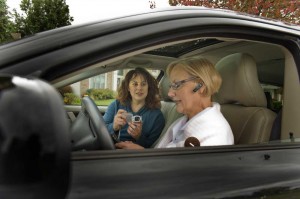
As gas prices squeeze wallets and ever-powerful mobile technologies become smaller and more cost effective, telecommuting has become a valuable and productive option for businesses.
By the close of this year, 75 percent of U.S. professionals will be considered mobile workers and will utilize at home and mobile stations to access and conduct work previously done in an office setting. That”™s according to the numbers crunched by International Data Corp. in Framingham, Mass.
“Telecommuting has been out there for a while, but it was with the advent of smartphones that we really began to see an influx in people working from home and on the go,” said Jenny Englert, senior cognitive engineer, for the Norwalk-based Xerox”™s Work Practice and Technology Team, which spent two years between 2007 and 2009 mapping telecommuters and traveling professionals.
Last year, about 10 percent of the state”™s residents working in private industry telecommuted on a regular basis and one-third worked from home occasionally, according to Telecommute Connecticut, a consultant group that helps employers set up work-from-home programs.
“The last four or five years have marked a real globalization in the way people work,” Englert said. “We went across the country to see how the telecommuting life was affecting the way people were operating on a daily basis.”
The finding of the study will be published in May in the book “Making Work Visible, Ethnographically Grounded Case Studies of Work Practice.”
Englert said major cost savings have also contributed to the growing telecommuter workforce.
According to the Connecticut Department of Transportation, there are about 95,000 commuters traveling among Westchester, Fairfield and New Haven counties every day. AAA estimates that it costs a commuter driving a sedan 57 cents a mile to get back and forth to work, about $8,487 annually based on 15,000 miles of annual driving.
Englert said the hundreds of professionals interviewed ranged in age, industry as well as reason for preferring to telecommute.
“We found that these professionals all preferred the freedom of managing their own time,” Englert said. “Often they were more responsive to office initiatives and had a greater sense of responsibility and diligence in regards to their work.”
Many at-home workers were able to accommodate full days of work in addition to including more family and leisure activities, she said.
“In fact many of these professionals found it hard to know when to stop working. But their work performance was generally as good, or better than their in-office counterparts. There was great attention paid to balancing work and home life, they definitely didn”™t slack off.”
Englert said professionals would find their own ways separating and declaring work hours while at home, whether that meant wearing headphones, putting a sign on a door or creating an office.
Olga Adler, president of Olga Adler Interiors in Ridgefield, said she has noticed a large number of clients with the need for home-office accommodations.
“My experience in transforming home studies into highly functional, full service offices comes from working with mid-level executives from all sorts of industries who wish to have an option of working from home several days a week without missing the action,” Adler said.
Because of the of compact nature of today”™s computer equipment, in relation to the formerly bulky gear and webs of wires, accommodating a home office is much easier, she said.
Englert found that most businesses that allowed their workers to telecommute would offer stipends to retrofit their homes with work stations.
“Individuals given the opportunity to work from home generally reciprocate and appreciate the flexibility and ability to change their schedule in small ways,” Englert said. She said her team found successful telecommuters needed to be strict about creating access times in which co-workers could contact them.
“Working has the benefit to access some far off talent, but it can also mean working in different time zones or at different times of the day. There was a real consciousness of needing to be available.”




















Great article! From the statistics I’ve seen telecommuting is growing to a projected rate of 100 million people in the next 2 years.
Thanks for this! I actually was part of this Xerox study as i am a freelance consultant that works out of my home office. It was very interesting to be part of the Xerox study of non-traditional workers. Fascinating that they use data from studies like this to help them develop the next generation tools for future workers.